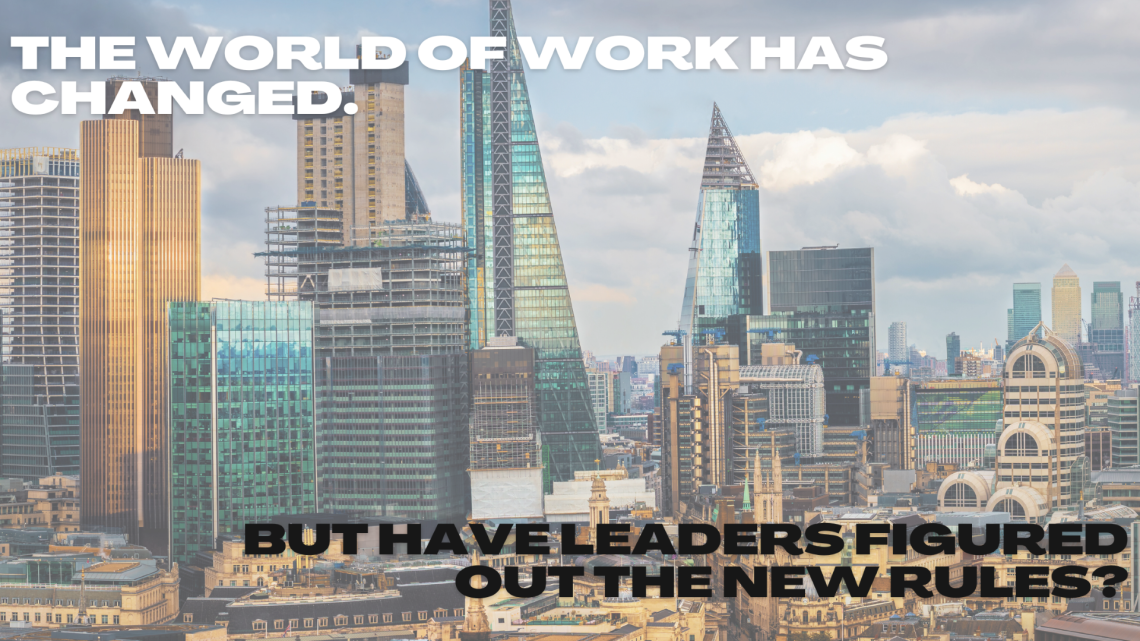
The new world order that we have settled into since the pandemic now feels equal parts strange and familiar. We don’t see masks as often, but when we do, we don’t react. Whether you learn someone is working fully remote permanently or is on site every day, it seems equally normal. While the initial resistance to remote work came from more senior leadership, it is the youngest workers – Gen Z – who are showing the strongest preference for in-office work arrangements. We have learned to live with constant change. The pandemic was an abrupt and worldwide event, and the knock-on effects of how we live and work together has shifted our norms. We aren’t going back. But the challenge now is to put structure and rules around our new norm. Leaders of large organisations must take the charge to establish a new permanent, sustainable model for where and how their employees work, the ways to meet the needs of global industry, and how to operate and thrive in a rapidly evolving economy.
Leaders of large organisations must do the hard work of establishing new norms.
No one can blame today’s leaders for feeling unprepared to strategise and succeed in the current environment. They don’t teach ‘post-pandemic organizational structure’ in business school. Nor can there ever be a template for this transition that meets the needs of every type of company and reflects every corporate culture. But employees do need guidance on how to operate now. I recently wrote an article about how individuals can be part of the solution – for example, how to be strong performers in a hybrid work environment. But that doesn’t mean that leadership teams shouldn’t be actively trying to reestablish themselves as the authority on how the world of work will function now.
Companies, even with a dispersed or partially remote workforce, still need to function as cohesive units.
Two different fundamental issues face leaders today. On the one hand, they need to decide what they want versus what they need. It seemed at first as if we would all just return to work, that the status quo would resume once the pandemic was over. But the shifts in where talent is located geographically, the surge in online communication, the forced adaptation to digital commerce at a global scale – it all has made the status quo of 2019 seem antiquated. Most importantly, workers simply said no at a rate that changed employer expectations. So what leaders want is a more nuanced negotiation with the talent pool. The other question for leaders is: what do we need? That requires understanding what the industry looks like now. Where are your customers? What can your suppliers provide? What elements of your operations were temporarily changed over the last few years and need to return to ‘normal’? What have you discovered that you can do just as well or better online, via new technology or with fewer people on site? And then the way forward lies in the balance of the two: what leaders would like for their companies and are willing to work to achieve, and what they need as a more immediate priority so they stay relevant and competitive.
It is still the responsibility of leadership to figure out how the organisation sees the world.
This kind of strategic planning, under these circumstances, is hard. First, your team should determine if you are aligned on the basics: What is your mission? How do you communicate your culture? Then you will need to find a new strategy that fits with the brand, and the needs of customers, suppliers, and employees. Once you understand operational needs, set the tone of this new business environment by re-establishing rules. Communicate clearly the boundaries of how to work. This includes things at the everyday execution level (when are remote workers expected to be online, what is videoconference etiquette), and a more strategic level (how do we meet our customers where they are now, how do we articulate the changes in the ways we operate). There is no roadmap for this, either by mirroring other companies or relying on something you learned in business school. But to remain competitive you must do the hard work of figuring out the way forward in this environment. We still rely on our leadership teams to give us a structure and unified vision. We may need that now more than ever.
In terms of my background and expertise, I have spent my entire career working as a trusted advisor to senior leaders wanting to improve the effectiveness of themselves, their teams and their companies. Prior to starting my own consulting firm, I led the global executive assessment and development team for Cisco. Earlier in my career I held leadership roles with RHR International, PepsiCo, Ashridge Executive Education, Hult International Business School and the Central European University, Budapest, Hungary.

Dr Robert Kovach
PSYCHOLOGY. LEADERS & TEAMS.







